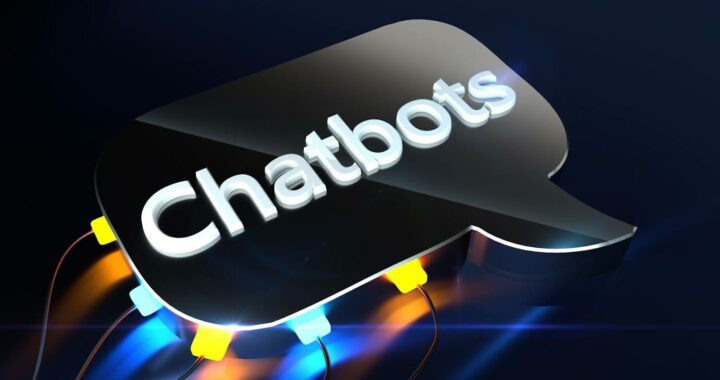
Measure the Success of Chatbot Marketing
Measuring the success of chatbot marketing is essential to determine its effectiveness and ROI. Here are some key metrics that can be used to evaluate the success of your chatbot marketing campaign:
1. Engagement rate: This metric measures how many users are interacting with your chatbot. A higher engagement rate suggests a more effective campaign.
2. Click-through rate (CTR): This metric shows how many users clicked on a link or call-to-action (CTA) within the chatbot. A higher CTR indicates that your content or offer is resonating with your audience.
3. Conversion rate: This metric measures how many users completed a specific action, such as making a purchase or signing up for a newsletter, after interacting with your chatbot. A higher conversion rate suggests that your chatbot is effective in driving action.
By tracking and analyzing these metrics, you can identify areas of improvement and adjust your chatbot marketing strategy to maximize its impact.
Understanding Chatbot Marketing
Chatbot marketing is a new and exciting way to connect with customers. By leveraging the power of conversational AI, marketing teams can automate customer service requests and provide personalized experiences. This makes it possible to streamline customer interactions and build relationships with existing customers.
In this article, we’ll discuss what chatbot marketing is and how you can measure its success.
What is Chatbot Marketing
Chatbot marketing involves using chatbots to engage and communicate with customers, potential clients, or website visitors. A chatbot is a type of software programmed to simulate conversation with human users, usually for the purpose of answering common inquiries, offer suggestions, or gather data.
Chatbot marketing can be done through several channels, such as websites, social media platforms, and messaging apps, and can be used to qualify leads, provide customer service, and streamline sales processes. To measure the success of chatbot marketing, businesses can track metrics such as user engagement, response time, and conversion rates.
By analyzing chatbot interactions and feedback, businesses can improve their chatbot’s performance and customer experience. As chatbot technology continues to evolve, chatbot marketing is becoming an increasingly popular and effective way to reach and engage with customers.

Advantages of Chatbot Marketing
Chatbots have become increasingly popular in recent years due to their numerous advantages in marketing strategies. Here are some of the benefits of using chatbots in your marketing approach to measure the success of chatbot marketing effectively:
1. Improved customer interaction: Chatbots are designed to offer personalized, interactive communication with your customers on your website, social media pages, or messaging platforms like Facebook Messenger, WhatsApp, etc.
2. Cost and time-effective: Chatbots offer an efficient and cost-effective way to communicate with customers, as they can handle multiple conversations simultaneously, freeing up staff to focus on high-level tasks.
3. 24/7 Availability: A chatbot is available 24/7/365, providing your customers with instant assistance with their inquiries or concerns.
4. Increased Conversion rates: Chatbots have been known to increase conversion rates by providing quick responses, relevant product information, and personalized recommendations to customers.
5. Valuable insights: Chatbots can track and analyze customer interaction data, offering you valuable insight into customer behavior, preferences, and frequently asked queries. This helps you to optimize your chatbot’s performance and improve the overall customer experience.
Types of Chatbots Used for Marketing
Chatbots are an innovative tool for marketers to engage with customers and provide a personalized experience. There are three main types of chatbots used for marketing, each with distinctive features and applications.
Button-based chatbots: These chatbots operate by presenting the user with a set of predetermined options in a menu or button format, from which the user can choose. Button-based chatbots are ideal for simple tasks, such as scheduling appointments or seeking basic information.
Rule-based chatbots: Rule-based chatbots operate using a set of predefined rules and conditions, which govern how the chatbot responds to user inquiries. Rule-based chatbots are best suited for fixed, rule-based tasks, such as providing customer service support.
AI-powered chatbots: AI-powered chatbots employ machine learning algorithms to improve their performance over time and provide a more customized experience. AI-powered chatbots are best suited for tasks that require more complex decision-making, such as a personalized product recommendation or a financial consultation.
Measuring the success of chatbot marketing involves tracking the number of user interactions, the retention rate, and the type of user engagement. Pro Tip: To evaluate the effectiveness of chatbots, it’s essential to start with a clear objective and metrics to measure success.
Measuring the Success of Chatbot Marketing
Chatbot marketing is becoming increasingly popular, as businesses look for innovative ways to interact with customers and provide support.
Measuring the success of your chatbot marketing campaigns can be a challenge, however, as it goes beyond just tracking the number of conversations had with customers.
In this article, we will explore the different metrics used to measure the success of chatbot marketing and discuss some of the best practices to use when setting up these campaigns.
Define Your KPIs for Chatbot Marketing
To measure the success of your chatbot marketing campaign, defining your Key Performance Indicators (KPIs) is paramount.
Here are some KPIs to consider:
User engagement: This KPI measures the number of users who interact with your chatbot and how often.
Click-through-rate (CTR): This KPI measures how many users clicked on the call-to-action (CTA) prompts offered by the chatbot.
Customer satisfaction (CSAT): This KPI measures how satisfied users are with the chatbot performance.
Conversion rate: This KPI measures how many users completed the desired action prompted by the chatbot.
Retention rate: This KPI measures how many users continue to engage with the chatbot after the initial interaction.
After defining your KPIs, set achievable goals and track your progress over time to measure the success of your chatbot marketing campaign.
Pro Tip: Regular monitoring and optimization of your chatbot KPIs will help improve the user experience and boost the overall success of your chatbot marketing efforts.
Track Conversions Using Chatbots
Tracking conversions using chatbots is becoming increasingly popular, as it provides marketers with valuable data on the effectiveness of their chatbot marketing strategies.
Here’s how to do it:
Define your conversion goals, such as completing a purchase, filling out a form, or signing up for a newsletter.
Use a chatbot platform that includes built-in analytics to track user behavior and conversions.
Set up conversations and targeted messaging that lead users to your conversion goals.
Monitor your chatbot data regularly to identify areas for improvement, such as high drop-off rates or conversions that take too long to complete.
Refine your chatbot marketing strategy based on your data insights to optimize conversions.
Measure Engagement Rates of Chatbots
The engagement rates of chatbots are a key metric in measuring the success of chatbot marketing strategies. To calculate the engagement rates of your chatbot, you can use a combination of the following methods:
1. Message open rate: This metric measures how many users opened your chatbot messages. A high message open rate indicates that your content is relevant and engaging.
2. Response rate: This metric calculates how many users replied to your chatbot messages. A high response rate indicates that your content resonates with your audience.
3. Conversion rate: This metric measures how many users took a desired action in response to your chatbot messages. Examples of desired actions include making a purchase, filling out a form, or clicking a link.
By tracking and analyzing these engagement metrics, you can gain valuable insights into the effectiveness of your chatbot marketing strategies and make data-driven decisions to optimize your campaigns.
Best Practices for Optimizing Success of Chatbot Marketing
Chatbot marketing is a powerful tool for connecting with customers and engaging with them in meaningful conversation. It can help brands build relationships with customers and get valuable insights into their preferences and behaviors.
In order to maximize the success of chatbot marketing, brands must follow best practices when optimizing their chatbots. This section will cover the best practices for optimizing chatbot marketing.
Provide Personalized Experiences Using Chatbots
Incorporating chatbots into your marketing strategy can enhance personalization for your customers. Here are some best practices for optimizing the success of chatbot marketing and measuring the success of your chatbot:
1. Clearly define the purpose and goals of your chatbot before building it. Identify your target audience and know what problems they are trying to solve.
2. Design a chatbot personality that resonates with your brand identity and tone of voice. Make the bot relatable and use language that is familiar to your audience.
3. Offer multiple channels of communication for the chatbot, including websites, social media platforms, and messaging apps to reach a wider audience.
4. Train your chatbot to handle as many customer inquiries as possible to reduce the dependence on customer service representatives.
5. Track your chatbot’s performance using metrics such as usage rates, click-through rates, and customer satisfaction ratings. This will help you identify areas for improvement and make data-driven decisions.
By incorporating these best practices, you can create personalized experiences for your customers while effectively measuring the success of your chatbot marketing.
Ensure Chatbots are Easy to Use and Understand
To optimize the success of chatbot marketing, it’s crucial to ensure that chatbots are easy to use and understand for your target audience.
Here are some best practices to follow:
1. Keep it simple: Use clear and concise language, and limit the number of options and steps required to complete a task.
2. Provide context: Make sure your chatbot provides enough context for users to understand what it can do and how to use it.
3. Use visual cues: Incorporate visual cues, such as buttons and icons, to make it easy for users to navigate and engage with your chatbot.
4. Test and iterate: Continuously test and optimize your chatbot’s performance to identify areas for improvement and ensure it’s meeting the needs of your target audience.
By ensuring your chatbot is easy to use and understand, you can increase engagement and the likelihood of achieving your marketing goals.

Use Chatbots to Effectively Guide Customers Through the Purchasing Funnel
Chatbots have emerged as a valuable technologically advanced tool for businesses to guide customers through the purchasing funnel. Here are some best practices to optimize the success of chatbot marketing and measure its impact on your business:
Keep it conversational: Chatbots should be programmed to simulate natural human communication. Use everyday language, personalization, and empathy to engage with customers and provide a more personalized experience.
Understand your customers: Use customer data and insights to tailor your chatbot interactions and guide them through the purchasing funnel efficiently.
Clear and concise: Keep the messages clear and concise, making it easier for customers to understand and take action.
Continuously learn and improve: Continuously gather feedback and analyze user behavior to identify areas for improvement and refine the chatbot’s capabilities.
To measure chatbot marketing success, you must identify and track key performance indicators (KPIs) such as engagement rate, click-through rate, and customer satisfaction rate. Analyzing these metrics will help optimize your chatbot strategy and ensure you’re providing a better customer experience.
Common Mistakes in Measuring the Success of Chatbot Marketing
Chatbot marketing plays an essential role in modern day marketing making it a necessity to measure its success.
With the lack of experience and knowledge regarding the subject, it is easy to make mistakes when measuring the success of chatbot marketing. This section will cover some of the most common mistakes made when measuring the success of chatbot marketing.
Relying Solely on Vanity Metrics
One of the most common mistakes in measuring the success of chatbot marketing is relying solely on vanity metrics. Vanity metrics, such as the number of bot users, page views, or engagement rates, can be misleading as they do not always accurately represent the success of a chatbot campaign.
To measure the true success of your chatbot marketing, focus on these key metrics instead:
Conversion rate: Measure the number of users who completed a desired action, such as making a purchase, after interacting with your chatbot.
Retention rate: Measure the percentage of users who returned to engage or interact with your chatbot again after their initial visit.
Customer satisfaction: Measure how satisfied your users are with their interactions with the chatbot, using surveys or feedback forms.
By measuring these metrics, you can gain a better understanding of the actual impact your chatbot is having on your marketing efforts and overall business success.
Not Keeping up with Chatbot Updates and Features
Not keeping up with chatbot updates and features is one of the most common mistakes businesses make when measuring the success of their chatbot marketing strategy.
Chatbots have evolved beyond answering basic questions and can now provide personalized recommendations, process orders, and even integrate with payment gateways. By not keeping up with chatbot updates and features, businesses miss out on opportunities to improve user engagement and conversion rates.
Here are some tips to stay up-to-date with chatbot updates and features:
- Follow industry leaders and chatbot development blogs.
- Attend webinars and conferences to learn about the latest trends and advancements in chatbot technology.
- Regularly evaluation your chatbot analytics to identify areas for improvement and iterate your strategy accordingly.
- Strive to continuously enhance the user experience with your chatbot to encourage repeat usage and build brand loyalty.
Failing to Adjust Chatbot Strategies Based on Data Analysis.
Failing to adjust chatbot strategies based on data analysis is a common mistake many businesses make while measuring the success of chatbot marketing.
Data analysis of chatbot interactions can provide valuable insights into customer behavior, preferences, and needs. However, without adjusting the chatbot strategies based on this data, businesses may fail to realize their full potential. To ensure the success of your chatbot marketing strategy, it is crucial to analyze the data regularly and make adjustments accordingly.
Here are a few tips to optimize your chatbot strategy based on data analysis:
- Analyze the chatbot interactions to understand what customers are asking and what type of responses are providing the most value.
- Dive deeper into the data to identify patterns and trends to refine the chatbot’s personalized recommendation engine.
- Test improvements and analyze behavioral changes to evaluate the impact of new chatbot strategies on customer experience.
Continuing to adapt and improve the chatbot strategy will ensure that it remains up-to-date with customer preferences and expectations.






